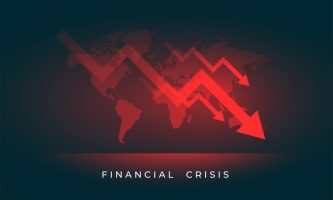Vertical vs Horizontal Integration: What Are The Key Differences?

Growth and expansion are the fundamental aspects of any business. It is a universal truth, and you cannot negate it from your standpoint. You cannot sway away the reality from your endpoints. Vertical vs Horizontal integration is a business model that most businesses adopt.
Horizontal integration is when a business acquires the same line of business at the same level of the value chain. It eliminates the competition to a greater extent. On the other hand, vertical integration includes ruling over the entire industry by covering the supply chain.
It all depends on the organization and which form of integration they would like to adopt. You need to identify the key factors of each process that can help you to make your decision wisely.
Key Differences Between Vertical Vs Horizontal Integration

There are several points of difference between vertical vs horizontal integration you cannot negate these points from your end.
| Basis Of Comparision | Horizontal Integration | Vertical Integration |
|---|---|---|
| Concept | When two firms mix with each other due to their same product lines and products, it is horizontal integration. | Vertical integration is that stage of an organization when one company acquires another company staying at the same stage or path. |
| Objective | Enhancing and increasing the size of the business. | Developing the supply chain of the company. |
| Consequence | Your company gains maximum market share by eliminating the competition. | Reduction of the wastage and cost. |
| Capital Requirement | The requirement of capital here is higher. | The requirement of capital here is lower. |
| Self Sufficiency | No, it is not a self-sufficient approach. | Yes!! It is a self-sufficient approach. |
| Strategy Used To Control | Market analysis | Industry requirements |
After getting the tabular format of differences between the two concepts, let’s get the core insights of it as well.
1. Meaning
Horizontal integration takes place when two firms combine with each other when their products and production levels are the same. In the case of vertical integration, the objective is to acquire the shares of the other company.
You need to go through the meaning of the two integration processes to make the application in your organization. Once you follow the process, things will become easier for you.
2. Objective
Horizontal integration aims to increase the size of your business. On the other hand, vertical integration aims at smoothening and strengthening the production process.
You need to be well aware of the objectives of vertical vs horizontal integration. You cannot make your choices all of a sudden. Read the objectives behind it for your organizational development.
3. Consequences
Horizontal communication eliminates the chances of competition. In other words, it wipes out the competition from the market. On the other hand, Vertical integration lowers the wastage and cost of production.
You can use horizontal integration to improve your brand presence in the market. Again in the case of vertical integration, you can use it to reduce the wastage in your production and distribution process.
4. Capital Requirement
The capital requirement in the case of horizontal integration is high compared to vertical integration. You cannot negate the investment part in the process of your brand development. The marginal cost will be less.
You need to have enough capital with you to initiate the process of horizontal integration. On the other hand, in the case of vertical integration, minimum capital is enough to initiate the process with ease.
5. Self Sufficiency
The chances of self-sufficiency in the case of horizontal integration are not there, whereas in the case of vertical integration, the chances of self-sufficiency are present. You need to get through the two integration processes to make your final business decisions.
If you want to do business independently, then horizontal integration can be a loss for you. On the other hand, Vertical integration can be a great option for you if you like to do independent business. As per the experts, self sufficiency is important.
6. Controlling Factor
Vertical integration can assist you in gaining control over the whole industry. You can gain control over the entire market with the help of horizontal integration. The chances of growth in the case of vertical integration are higher compared to horizontal integration.
Vertical vs horizontal integration can make your journey easier in the process of controlling the business. You cannot make things happen all of a sudden.
What Is Vertical Integration?
Vertical integration is that stage of an organization when one company acquires another company staying at the same stage or path. Vertical integration occurs when a company expands its operations by acquiring or merging with businesses along its supply chain or distribution channels. You need to consider the inventory turnover ratio.
Advantages Of Vertical Integration
There are several advantages of vertical integration that you must know at your end. Some of the key core benefits of it are as follows:-
- Vertical integration can help you to achieve cost efficiency. It can help in bulk purchases and reduce the cost of transactions.
- Distribution cost is reduced as it cuts off the requirements of the middleman in the process of integration.
- Your organization’s products can meet the desired quality level if you make the application of vertical integration.
- Price fluctuations of the suppliers can be reduced greatly due to the presence of vertical integration.
- Synergies between different stages of production and distribution can lead to increased overall efficiency. Your network marketing can grow due to this integration.
Backward Vertical Integration
In backward integration, a company acquires businesses that supply it with essential raw materials, components, or services. This allows the company to have more control over its supply chain, reduce costs, and ensure a stable supply of inputs. For example, an automobile manufacturer acquires a steel company to secure its source of steel.
End Of The Integration Process
Hence, from the mentioned discussion, I think the differences between vertical vs horizontal integration are clear to you. You need to understand the process that can make things easier and more effective for you in the long run.
You can share your views and opinions with us in this regard. It will help us to know your take in this regard. Try to convey your feedback to us from time to time.
Read Also:













